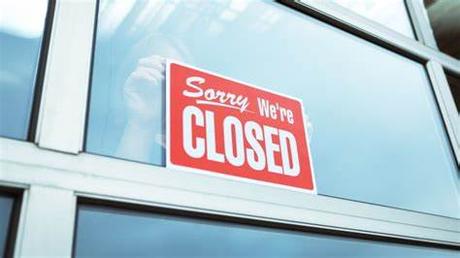
In recent years, the craft beer industry has experienced a disturbing phenomenon: the increasing closure of breweries. Once flourishing with creativity and innovation, breweries across the globe are now grappling with economic challenges that threaten their existence. Just yesterday pioneering brewery Anchor Brewing Company announced it was closing its doors due to sluggish sales.
This alarming trend raises questions about the future of craft beer and the factors contributing to this unfortunate downturn. In this post, we delve into the causes behind the closure of breweries, the potential implications for beer enthusiasts and communities, and how this situation can be addressed.
Saturation and Competition
One of the main factors driving the closure of breweries is the saturation and intensifying competition within the craft beer market. In recent years, the number of breweries has skyrocketed, resulting in a crowded landscape. As a consequence, smaller breweries often struggle to differentiate themselves and gain market share, leading to financial instability.
Moreover, the growing popularity of craft beer has attracted large corporations, which have acquired or established their own craft beer brands. This corporate presence can dominate distribution networks, making it challenging for independent breweries to secure shelf space and reach consumers. As a result, many smaller players find it increasingly difficult to compete, especially when faced with limited marketing budgets and production capabilities.
Rising Costs
Another significant factor contributing to brewery closures is the rising cost of ingredients, equipment, and operational expenses. Craft brewing requires high-quality ingredients, such as hops, malt, and yeast, which have become more expensive due to supply and demand dynamics. Furthermore, energy costs, facility rents, and labor expenses have all increased, putting additional strain on brewery budgets.
Additionally, the packaging and distribution aspects of the business pose financial challenges. The rising cost of cans, bottles, labels, and shipping can significantly impact a brewery’s bottom line. As breweries aim to maintain competitive prices, absorbing these increased costs becomes increasingly difficult, ultimately forcing some to close their doors.
Changing Consumer Preferences
Consumer preferences and tastes play a pivotal role in shaping the success or failure of breweries. While craft beer has enjoyed tremendous growth over the years, consumers are becoming more adventurous and demanding a wider range of options. Breweries that fail to adapt to evolving tastes risk losing their customer base.
Craft beer enthusiasts now crave variety, innovation, and unique flavor profiles. With limited resources and capacity, some breweries find it challenging to constantly introduce new and exciting brews to keep up with consumer expectations. This inability to meet changing demands can result in decreased sales and financial instability, ultimately leading to closures.
Community Impact
The closure of breweries extends beyond financial repercussions; it also affects the communities they serve. Breweries often act as cultural and social hubs, attracting locals and tourists alike. Their closure not only eliminates gathering spaces but also results in the loss of jobs and economic activity.
Breweries have been integral in revitalizing neighborhoods, spurring tourism, and supporting local agriculture through collaborations with farmers and suppliers. The closure of these establishments can dampen community spirit, leaving a void in the social fabric and negatively impacting nearby businesses.
The current trend of breweries closing is a sobering reminder of the challenges faced by small and independent businesses within the craft beer industry. Saturation, competition, rising costs, changing consumer preferences, and the subsequent impact on communities all contribute to this disheartening reality.
To address this trend, it is crucial for breweries to find ways to differentiate themselves, maintain financial stability, and adapt to evolving consumer preferences. Collaboration and support from local communities, governments, and industry organizations can also play a significant role in sustaining the growth of craft breweries.
Ultimately, the craft beer community needs to rally together to navigate these challenges and preserve the vibrant, diverse, and creative spirit that has made craft beer so beloved. Only through collective efforts can we ensure a thriving future for breweries and continue to savor the unique flavors and experiences they offer.
